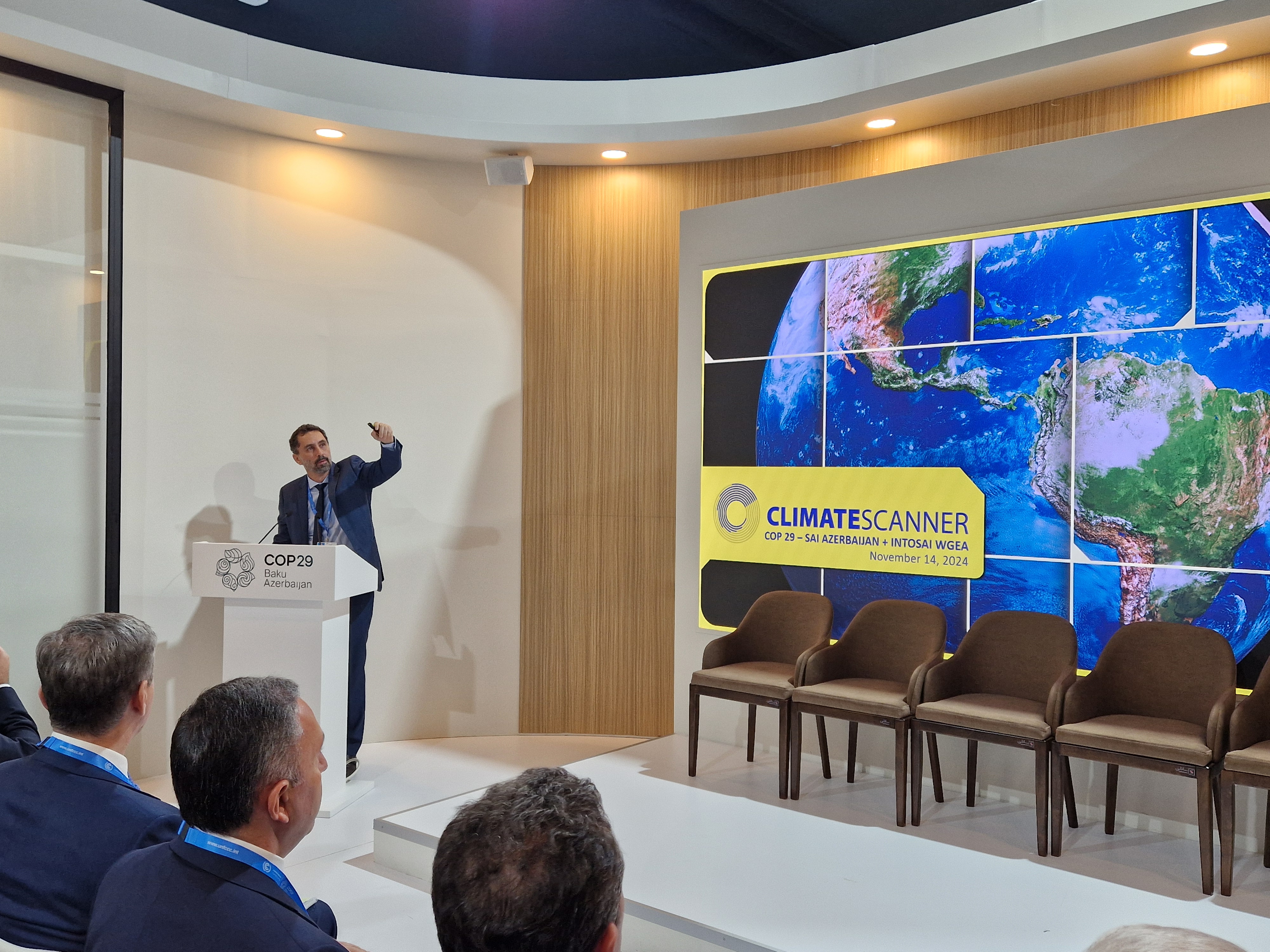Dive into climate finance: tracking finance flows and insights from COP29
16.01.2025
At COP29 in Baku, Azerbaijan, the global community was once again grappled with the complex challenge of climate finance. This crucial aspect of climate action took center stage, highlighting the ongoing struggle to bridge the gap between ambitious climate goals and the financial resources needed to achieve them.
When we talk about climate finance, we refer to finance from public, private and other sources of financing aimed at mitigation and adaptation efforts in response to climate change. Climate finance as a concept includes all levels of financing (local, national and international) and is institutionalized by the United Nations Framework Convention for Climate Change (UNFCCC) (1992), the Copenhagen Accord (2009) and the Paris Agreement (2015), which underline directing financial resources from the well-endowed to the vulnerable and financially less capable. Climate finance is especially important from the perspective of developing countries, as it is the main tool to further efforts in recipient countries in reducing emissions and increasing climate resilience.
New Collective Quantified Goal on Climate Finance (NCQG)
COP29 – frequently referred to as “the finance-COP” – was anticipated to achieve a decision on increasing the annual Collective Quantified Goal on Climate Finance, replacing the previous goal of $100 billion set until 2025 with a much more ambitious one. After two weeks of negotiations in Baku, developed countries agreed to commit to a new annual goal of $300 billion. Moreover, the COP29 outcome included a financing target of at least $1.3 trillion derived from public, private and alternative sources by 2035.
This agreement represents a step forward, acknowledging the large scale of finance required for effective climate action. However, reactions to the outcome were mixed. Developing countries welcomed the increased commitment with simultaneous concerns about the timeline and need for immediate action. Realistically, the amount needed for mitigation and adaptation efforts is listed in trillions.
Climate finance can be distributed with several different instruments, such as grants, loans, equities, donations and guarantees. Developing countries can receive access funding from multilateral funds, while governments and the private sector can be granted concessional loans from financial institutions, such as development banks. Such grants and loans can be used to invest in climate change mitigation projects, such as reduction of greenhouse gas emissions and developing green infrastructure, in addition to adaptation efforts, such as improving early-warning systems and costal protection. New climate finance requires improving tracking mechanisms to ensure that finance flows are transparent, effective and connected to needs on the ground.
The first ClimateScanner results reveal difficulties in tracking finance flows
The results of the first round of assessments of the ClimateScanner, SAI Brazil led and WGEA supported global endeavor, were presented at COP29. Based on 61 Supreme Audit Institutions’ (SAIs) assessments, the results reveal persistent difficulties in tracking climate finance flows. According to the results, most national governments are not able to track how much they spend on climate action, concerning both – private and public finance. Additionally, there are difficulties in adopting a clear definition of what constitutes climate finance.
This means that governments are struggling to track where direct and indirect climate spending is really going. Public funding alone is insufficient to address climate change, and private investment is critical in complementing public finance. Regarding the COP29 outcomes on increasing climate finance, developed countries emphasized the importance of stronger involvement of the private sector to meet the ambitious annual funding targets.
These challenges underscore the need for improved transparency and standardized reporting mechanisms to track climate financing.
Rationale for tracking climate expenditure
A report by the Institute for European Environmental Policy on the approaches to tracking climate expenditure commissioned by the National Audit Office of Finland in 2021 offers essential perspectives on the significance of tracking climate spending and presents some tracking systems. Tracking climate expenditure ensures that governments and institutions are accountable for their commitments and transparent about how funds are allocated and spent. Furthermore, tracking spending can create pressure on governments to increase climate-related spending by demonstrating current levels of investment and highlighting finance gaps. Tracking proves essential also in demonstrating the progress on climate finance commitments. It serves as a critical lens for assessing the correlation of finance with climate policy by evaluating how comprehensively governments integrate climate considerations into fiscal strategies and spending priorities.
As claimed in a recent OECD policy paper on Aligning finance with climate goals, to ensure that all finance aligns more effectively with climate goals, public policies and private initiatives should be guided by thorough assessments of progress. Transparency and credibility of methodology and data is required to prevent falsifying progress with climate commitments. Tracking the progress on climate commitments remains fragmented, without a common framework for reference. Climate-related initiatives that impact the alignment of finance with climate goals and help evaluate progress are implemented by different stakeholders, however these actions and assessments are often uncoordinated and primarily focus on addressing climate risks, which does not always lead to better alignment with climate goals.
Key findings from the WGEA climate finance project
The 2022 INTOSAI Working Group on Environmental Auditing (WGEA) report on climate finance outlines similar findings with key challenges in auditing progress towards SDG 13.a, the target to implement the commitment to mobilize climate financing from developed countries. The report includes results of a survey of WGEA members from donor and recipient countries of climate financing. These results indicate that the lack of a universally agreed definition of climate finance complicates measuring progress towards climate finance goals.
According to the survey, there are difficulties in assessing the effectiveness and impact of climate finance, as only a few countries have set clear objectives associated with climate finance contributions. Beyond tracking the flows of climate finance, auditors should also assess the impact of climate finance on achieving climate goals, despite the challenges. Developing appropriate indicators and methodologies for impact assessment is recognized as a complex, but nonetheless, important task in assuring robust climate finance auditing.
Furthermore, the report shows the lack of connection of funded projects or programs with broader strategic plans in audits assessing climate finance. Such audits do not consider how these projects align with or contribute to broader strategic plans, such as National Adaptation Plans (NAPs) for climate adaptation.
Implications for future climate action
The success of these financial commitments hinge on effective implementation. The emphasis on transparency and accountability in climate finance, as highlighted especially by the ClimateScanner initiative, will be crucial in ensuring that funds are used effectively and reach their intended recipients.
As we look ahead to COP30, organized in Brazil in 2025, the focus will undoubtedly remain on bridging the finance gap and ensuring that climate action is adequately funded across all regions. Outcomes of COP29, translated as financial commitments, provide a foundation, but sustained effort and cooperation will be essential to translate these commitments into tangible climate action on the ground.

 SAI Brazil presented the first results of the ClimateScanner at COP29. Picture: WGEA Secretariat
SAI Brazil presented the first results of the ClimateScanner at COP29. Picture: WGEA Secretariat

